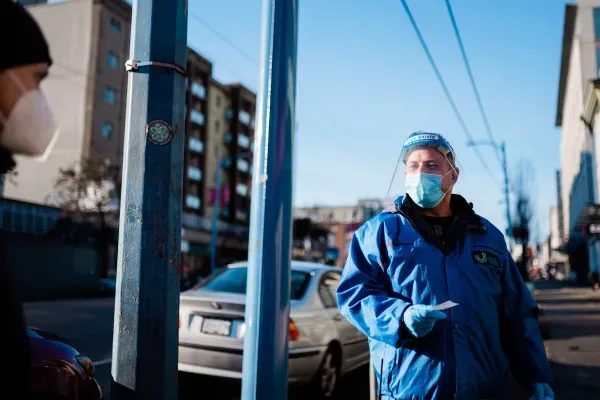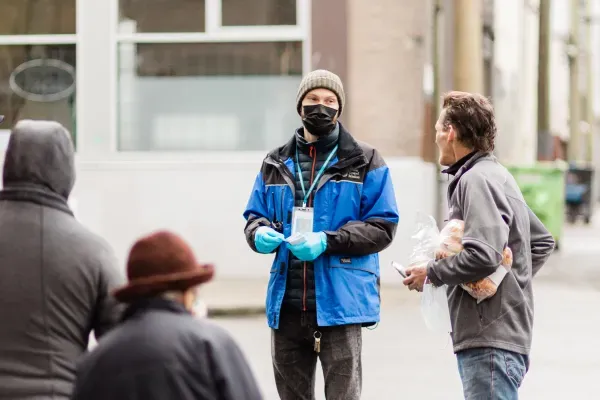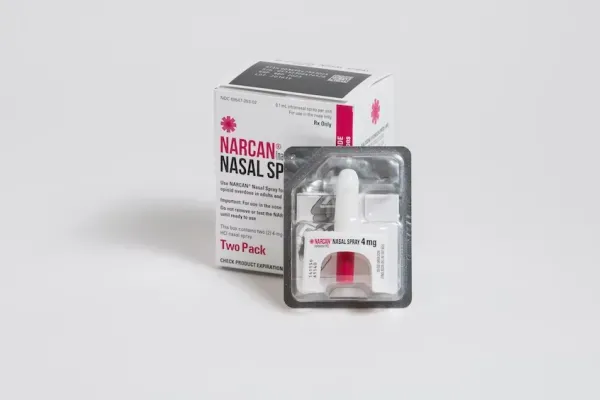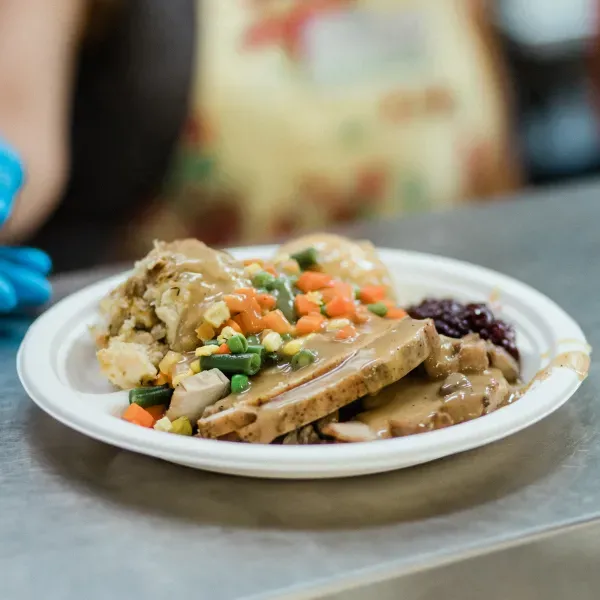CW: Overdose, Death
Since 2016, the equivalent of one average sized town in BC has been lost to overdose! More than 10,000 lives gone and hundreds of thousands more who are forever impacted by these losses. It is now the leading cause of "unnatural deaths" in BC. It's absolutely heartbreaking.
August 31st marks a solemn occasion: International Overdose Awareness Day. The aim is to raise awareness about the overdose crisis, reduce stigma surrounding drug-related deaths and to honour those who have fatally overdosed. In Vancouver’s Downtown Eastside (DTES), International Overdose Awareness Day is particularly important because so many people in our community have died or lost loved ones, but we know that impact is felt beyond our neighbourhood—across B.C. thousands of families have been affected.
It’s more important than ever to talk about the Opioid Overdose Epidemic - and to hear from the frontline staff who are busy saving lives every day.
Read on to learn:
1. The hard hitting, and heartbreaking, facts: The state of the overdose crisis today
2. A brief overview of why people use drugs
3. What happens to your body when you overdose
4. What’s being done by the government and non-profits to combat this crisis
5. How you can help

Facts That You Can’t Ignore
- So far in 2022, 1,095 people have lost their lives to illicit drug overdose. If the deaths continue to happen at this rate, B.C. will surpass the record-breaking loss of 2,264 people in 2021.
- As of June 2022, on average, 6 or more people die every single day in BC from a toxic drug overdose.
- In July 2022, BC reached the terrible milestone of 10,000 deaths since the toxic drug death crisis was declared in 2016.
- In 2022, 73% of those dying were aged 30 to 59, and 78% were male.
- The BC provincial rate of paramedics attending overdoses events has increased 6 fold since the declaration of the toxic drug emergency. However, there are many overdose cases where the paramedics are not called.
- Illicit drug toxicity in BC is now second only to cancers for potential years of life lost.
Why Do People Use Drugs?
“[P]eople [need] to understand that substance use, and addiction is multi-layered and complicated. And it is increasing in our communities at an alarming rate. There are different roads that lead to substance use; however, the common thread is that it is a response to pain.” - Shelley, Outreach Worker
No one in this world wakes up in the morning desiring to disappear into addiction. By walking alongside people who are experiencing some of the darkest times in their lives, at UGM we understand that drug and alcohol use is often a result of trauma - a response to pain. Addiction happens once you can’t stop using drugs and/or alcohol, even if you want to. It is insidious, harmful, and consuming - causing deep pain for both the person struggling, and their loved ones. Addiction is something that can stay with a person for a long time, it is a debilitating health issue and it doesn’t go away like the common cold.
We also know, and have seen, that the people dying from fatal fentanyl overdoses aren’t just members of the most marginalized communities. They are small business owners, grandparents, teens. People struggling with long-time addictions, and those trying drugs for the first time both face an enormous and life-threatening risk when using drugs.

What Is An Opioid Overdose?
“The last year has been painful for many families, filled with tragedy and heartache. The number of overdoses and [deaths] due to overdoses has increased dramatically. It is a daily occurrence and that’s simply unacceptable. We need to be vigilant [when] coming upon a scene where there is a person experiencing an overdose. The fentanyl that’s on the street is lethal.” - Ed, Outreach Worker
Opioids on their own are one of the easiest substances to overdose on. However, what is being called and sold as opioids, like heroin or fentanyl, at the street level, is often a toxic mixture of several types of drugs, including benzodiazepines. Despite drug toxicity and overdose often being interchanged when discussing the overdose crisis, they actually mean two different things:
“Overdose can be interpreted as the individual made a mistake and took too large [of] a dose. However, the reality is [that] the drug supply is toxic, [which] result[s] in people being unintentionally poisoned by substances they didn’t intend or want to ingest," shares Geoff, an outreach worker.
Here is a simplified explanation of how a person’s body overdoses:
- Blood - Opioids enter and travel all over your body, including your brain, through blood, where it can plug into the opioid receptors.
- Brain - Oxygen flow can be limited in the brain causing damage. An opioid overdose can lead to permanent brain damage after four minutes of oxygen deprivation.
- Heart - Opioids suppress neurological signals causing the heart rate to slow down, or even stop.
- Lungs - Opioids can cause your body to stop receiving correct signals, making your lungs barely functional. This slows down your breathing considerably and can lead to unconsciousness.
What Is Being Done?
“Administering Narcan for the first time can be scary and a bit intimidating. I remember praying that my hands wouldn’t shake, and that the person would become responsive quickly… You try to suspend your emotions and remain calm; however, it can be so difficult in those moments. It’s especially difficult when it involves someone you have built a close relationship with... I thank God for the 911 responders at the other end of the phone, who walk you through all the procedures.” - Shelley, Outreach Worker
There is always hope. Across BC, there are initiatives taking place to help combat the Opioid Overdose Epidemic from a grassroots level. From a healthcare standpoint, Naloxone (Narcan) is being made more readily available for people to use. It is a medication that can quickly reverse the effects of an overdose from opioids. There are many pharmacies providing free Naloxone kits and Overdose Response Training - no prescription needed.
Additionally, efforts are being made from a governmental level by decriminalizing small amounts of illicit substances. On May 31, 2022, the Federal and BC Provincial Government announced that from Jan. 31, 2023 until Jan. 31, 2026 adults (18+) will no longer be criminally charged for possession of up to 2.5g of illicit substances intended for personal use. The goal of this exemption is not to legalize the use of illicit substances, but to reduce stigma around drug use so that it can lower the barrier of entry for critical care.
The overdose crisis is complex, and there isn’t a single answer to saving lives, and there are also a lot non-profits and community associations that come alongside those struggling with addiction - either by providing somewhere safe for them to use, so they aren’t alone, or offering recovery options. At UGM, in addition to our outreach services, we also provide multiple recovery options for men and women through our Alcohol & Drug Recovery programs.

You Can Help. Here’s How:
“The members of our community that are at risk of experiencing an overdose are no different than you and I. They are wonderful, amazing individuals with many gifts and talents… They are going through a health issue, and they need love and acceptance before healing can begin.” - Ed, Outreach Worker
Anyone struggling with addiction deserves an opportunity to recover and move on in their lives. Here’s what you can do:
- Learn more about the Opioid Overdose Epidemic and addiction. When we learn more about other people's experiences it helps humanize and destigmatize what they may be going through. Learn more here.
- Know someone who is experiencing addiction? Start a conversation with them to provide your support and it may help them prevent an overdose. Here are some tips to get the ball rolling.
- Know the signs of an overdose - and how to respond.

- S - Stimulate: Shout, poke. Unresponsive? Call 911.
- A - Airway: Open their airway. Tilt their neck back gently.
- V - Ventilate: Give 1 breath every 5 seconds.
- E - Evaluate: Are they breathing?
- M - Muscular injection: Inject 1mL of naloxone into a muscle. Keep giving breaths.
- E - Evaluate and support: If they don’t respond after the first 3-5 minutes give another naloxone injection. Continue giving breaths
- Carry a Naloxone kit with you at all times. However, administering Naloxone can be an emotional experience so it is important that you get proper training for it.
- Find organizations like UGM that walk alongside people living with addiction and consider donating, volunteering or working for them to provide more support.


